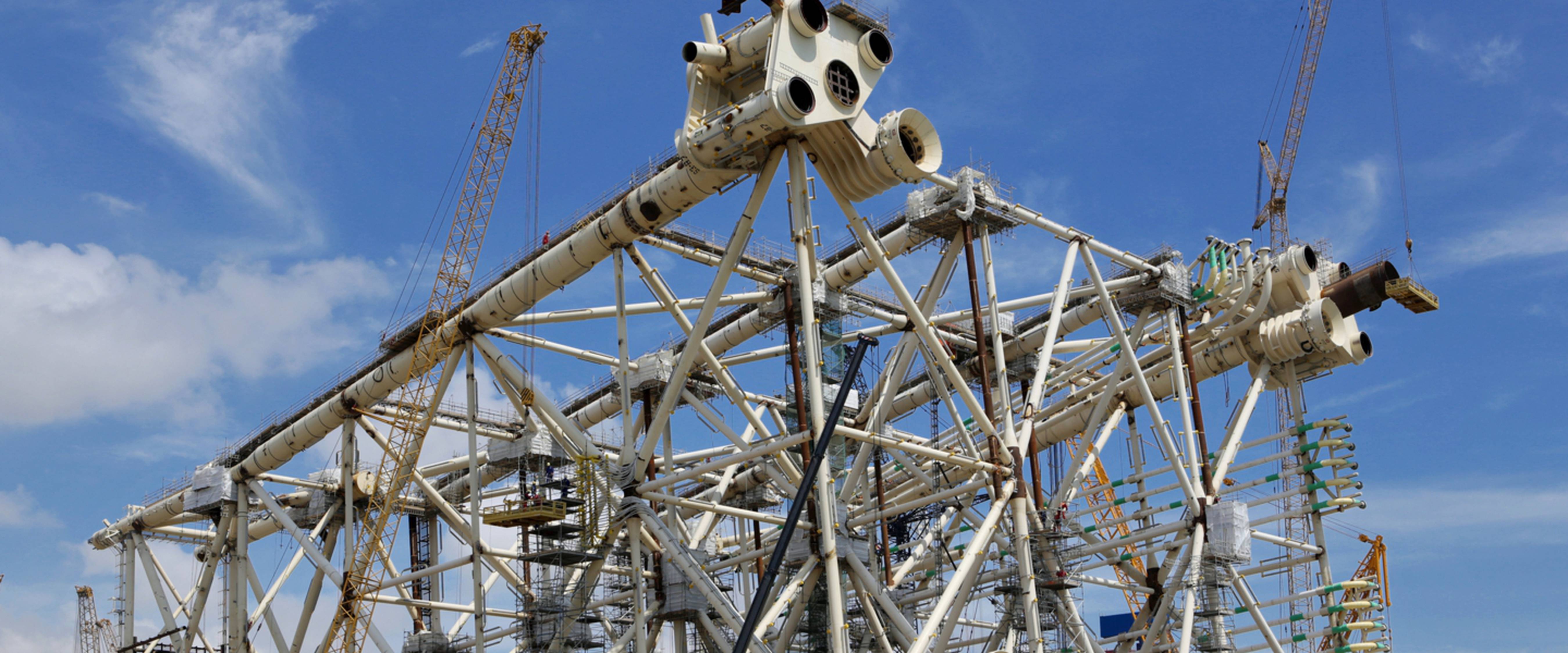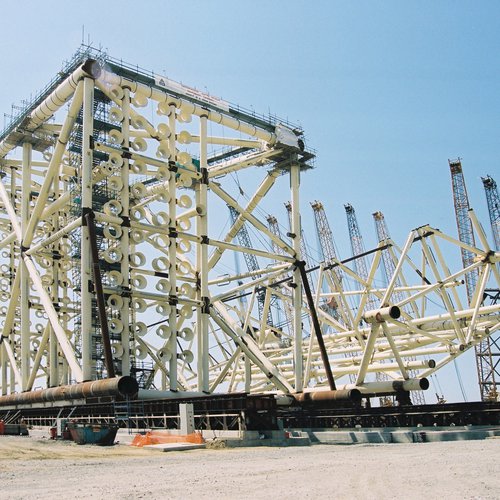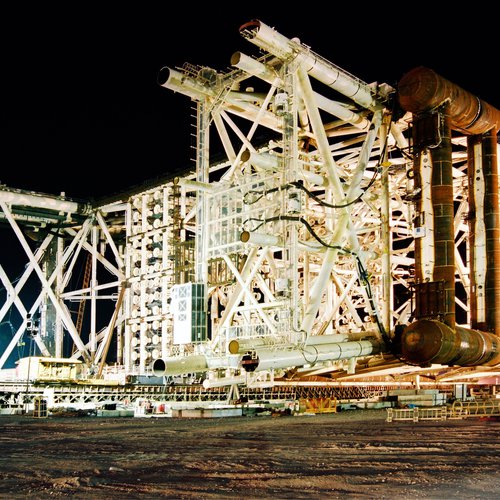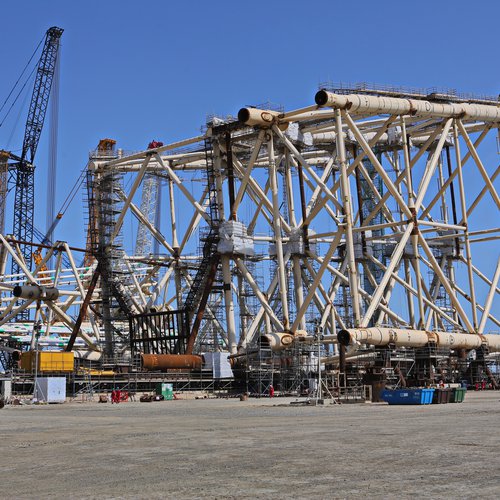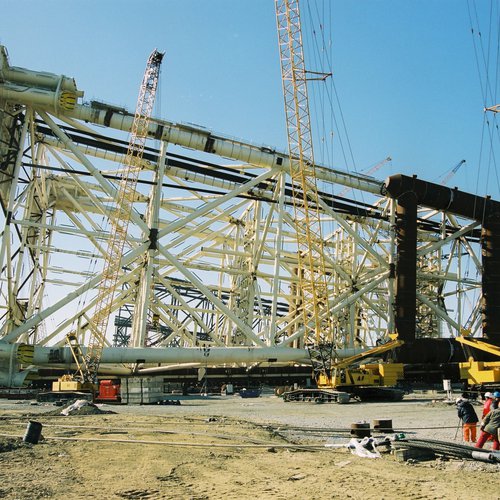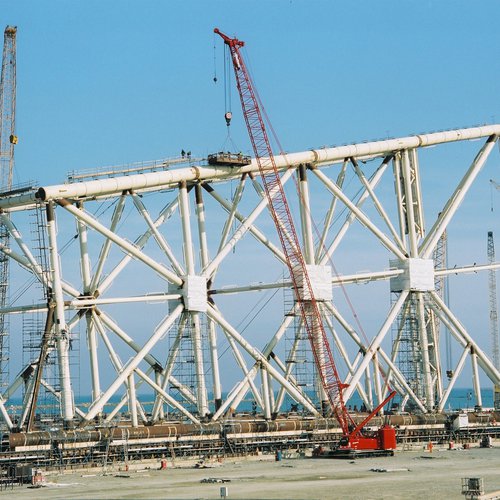Jacket Fabrication Process
Jacket refers to the steel frames supporting the deck and the topside within the fixed offshore platforms designed for oil and gas exploration and production.Our jacket fabrication process starts with delivery of plates and other associated materials to designated workshops and their off load with overhead cranes with lifting capacity up to 90 tons.
The receipt process is conducted by the BOS Shelf Quality Control team, in order to confirm that the delivery of plates complies with the Purchase Order. Once the materials are checked and all the necessary data is registered, the Fabrication team submits a request in accordance with shop drawings and nesting issued by the Engineering department and approves for construction (AFC) to the Material Control team.
The Material Control team starts the fabrication process with blasting plates in Work Shop 2 and passes blasted plates to computer-assisted cutting tables in Work Shop 3. Upon completion of the cutting work, plates are handed over to the automated rolling machines with capacity up to 150 mm, and with thickness and up to 4,000-4,500 mm of internal diameter. After cold rolling process plates turn into cans and become ready, they are passed to SAW welding booms for proceeding seam welds on them. The Quality Control department controls all the processes to ensure design specs and company procedures are fully observed on every stage.
After the confirmation of visual inspections, MPI, NDT checks, cans are ready to be welded together to make a long steel tube, continuing sub-fabrication production line in Work Shop 5, as well as, fabrication and profiling process in Work Shop 6 on computer assisted profiling Muller machines.
Before the braces are transferred to the assembly site, they pass through the Custom Coating Facility (CCF) for blasting, priming and painting work. Once delivered to the site, braces are assembled into elevations and lifted with heavy crawler cranes with up to 1,350-ton lifting capacity and fitted on the legs of the jacket, installed on Skidway and supports.
After the erection work and roll up of center box and outer frames, two units of heavy duty floatation tanks are installed on the jacket, and it is ready to be skidded with dedicated Push-Pull system, which is capable to move structures up to 30,000 tons on barge, with futher transporting the jacket from BOS Shelf sheltered harbor with direct sea access to installation coordinates.
Capacities
ROLLING
- 8 automated machines with capacity up to 150 mm thickness and up to 4,000-4,500 mm of internal diameter
- 32 SAW welding booms and 40 mobile semi-automatic welding machines
- 16 overhead cranes (up to 50 ton capacity)
- Monthly output: 2,500 tons on a single shift basis
FABRICATION
- 14 covered structural bays
- overhead cranes (up to 90 ton capacity)
- 3 computer-assisted Muller RB (1,200 as largest) profiling machines
ERECTION
- 550,000 m² of erection area
- 25 crawler & mobile cranes with up to 1,350-ton lifting capacity
- 4 skidways with a bearing capacity from 85 t/lm up to 350 t/lm
- overall capacity of over 4,200 tons
LOAD OUT
- 1500 m refurbished quay with 3x100 m reinforced offloading area (50 t/m2)
- Dedicated Push-Pull System capable of moving structure up to 30,000 te
- 4 loading slots with 28mx25m spans associated with STB1 launch barge
- direct sea access from a sheltered harbor
TRACK RECORD
- ACG PROJECT PHASE 1 : CA JACKET (14,130 t, 143.3 m) CWP JACKET (12,043 t, 143.3 m)
- ACG PROJECT PHASE 2 : WA JACKET (13,800 t, 133.9 m) EA JACKET (15,750 t, 166.9 m)
- ACG PROJECT PHASE 3 : DUQ JACKET (15,900 t, 185 m) PCWU JACKET (15,600 t, 185.m)
- COP PROJECT: COP JACKET (18,200 t, 196 m)
- SD2 PROJECT: PR JACKET (13,718 t, 107.6 m) QU JACKET (14,432 t, 107.6 m)






